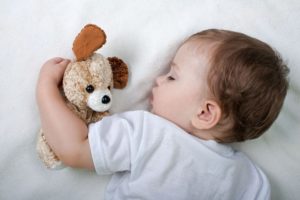Blog
A Short Guide to Pediatric Nebulizers and Breathing Treatments
 Nebulizers are devices that deliver liquid medications in breathable aerosol form. The devices are prescribed to treat respiratory conditions. If your child has been prescribed a home nebulizer and treatments, consider the nebulizer machine to be an extra-fancy inhaler that you help your child use safely and effectively.
Nebulizers are devices that deliver liquid medications in breathable aerosol form. The devices are prescribed to treat respiratory conditions. If your child has been prescribed a home nebulizer and treatments, consider the nebulizer machine to be an extra-fancy inhaler that you help your child use safely and effectively.
Nebulizer treatments are a proven way to administer necessary medications quickly. The following is a short guide to help parents understand more about nebulizer treatments for babies and children.
Nebulizers Help Treat Common Pediatric Respiratory Conditions
Babies and children are prescribed nebulized breathing treatments for a variety of conditions. A nebulizer may be prescribed for an acute, temporary breathing problem or for a chronic, long-term health issue.
Some of the pediatric conditions that are treated with nebulizer therapy include:
- Asthma
- Chronic sinusitis
- Reactive airway disease
- Croup
- Cystic fibrosis
- Bronchiolitis
- Common cold (rhinitis)
- RSV (respiratory syncytial virus)
The medications used in the nebulizer are custom-prescribed for each child’s specific condition and needs. Some medications help loosen mucus, while other medications used in nebulizers are bronchodilators that open the airways for easier breathing.
Nebulizer Machines Have Several Components
To deliver the aerosolized medication to your child, you use a nebulizer machine. Nebulizer machines are generally no larger than a gaming console or small coffee maker. Most nebulizers must be plugged into a power outlet, but some versions have battery packs for mobile treatments.
The two main types of nebulizer machines are:
- Air compressor — compressed air feeds the mist
- Ultrasonic — high-frequency sound waves feed the mist
To activate either type of nebulizer system, several feet of thin medical tubing is used. One end of the tubing is attached to a nipple on the machine and the other end of the tubing is attached to a delivery device like a mask or mouthpiece. The delivery device itself includes the actual apparatus which creates the nebulized mist.
Inside the mask or mouthpiece device, a reservoir for medication is located over the nebulizer apparatus. You unscrew the device and use a vial, syringe, or dropper to place the correct amount of medication into the mouthpiece or mask device.
When the nebulizer machine is turned on, the delivery device—which has been filled with proper medication—begins to look like it’s steaming with a flow of aerosolized mist. The delivery device directs the aerosolized medication to the child, and the child breathes in the medication until all of the aerosol mist runs out.
Nebulizer Therapy Delivery Varies By Age
Pacifier nebulizers are convenient delivery devices that allow small infants to suck while they inhale their medication through the nasal passages. Your pediatrician must approve this type of nebulizer device, since these are relatively new products. Not all nebulizer machines can deliver medication through pacifier nebulizers.
Mask nebulizers are the conventional method of delivering respiratory medications to babies and children younger than five or six years of age. The traditional nebulizer mask is see-through and is sculpted to fit gently but securely around the nose, mouth, and chin.
Children older than six are usually able to inhale their nebulizer medications with a mouthpiece. The mouthpiece has a breathing end with a flared piece that is easy to hold between the lips.
Nebulizer Equipment Needs Proper Cleaning
Be vigilant about keeping your nebulizer equipment clean. The delivery device must be cleaned thoroughly after every use to avoid bacterial and mold growth. Follow the manufacturer’s and your pediatrician’s recommendations for cleaning your child’s respiratory equipment.
Other cleaning and disinfection tips include:
- Change filters on machine as recommended
- Keep machine and tubing wiped free of dust and grime
- Don’t clean inside tubing, but replace if dirty
Don’t put nebulizers and related items in the dishwasher, as they may warp or be damaged. Replace any nebulizer mask or mouthpiece with broken or missing parts.
Kids Are Sometimes Fearful of Nebulizers
Babies, toddlers, and small children are often terrified of the loud sounds and strange sensations of the nebulizer system. However, a crying, terrified kid is not going to breathe deeply and inhale all of the medication they need from the mist.
Help your child out by:
- Administering infant treatments while they sleep
- Easing your toddler into treatments without force
- Explaining that the mist has healing superpowers
- Purchasing nebulizer masks with animal faces
- Letting kids decorate their machine
- Finding stories about heroes who wear masks
- Finding stories about kids and breathing treatments
- Letting kids wear hats to lower machine noise
- Providing puzzles or reading story books during treatments
Let your child have some control over the treatments. When they get to choose their favorite mask, hold the tubing, or turn the machine on, they feel a sense of accomplishment and ownership in their treatment plan.
Modern nebulizer machines are available in a host of kid-friendly designs including puppy, train, and building-block shapes. Talk to your respiratory equipment supply shop about the pediatric nebulizer versions they carry. Some ultrasonic versions deliver faster treatments than air-compressor machines.
Contact the home health experts at Corner Home Medical today to order your child’s nebulizer and related equipment in Minnesota. Our product specialists are ready to answer all of your questions about nebulizers and breathing treatment supplies.
